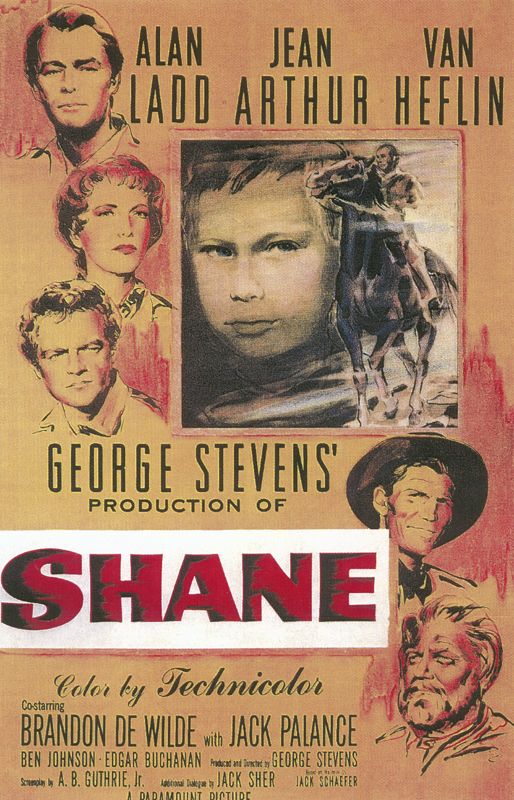Shane:
I have chosen the classic Western film Shane, which was made in 1953. The critic that I have chosen is The New York Times.

This film is a really good film as it is not only entertaining, but it is also a classic Western which can be identified straight away just from the front cover. The film itself has different sub-genres to other Western films, Shane has the presence of the homesteaders and the gunfighter, both of which make it an amazing film.
Within the New York Times review it states, "another great Western" and this shows that the film has the characteristics of Western films, which is really good as it represents what the classic American Western was like. These characteristics include; the clothing, acting/the behaviour of the people and the landscape of the "Wild West" as it mentions, "dramatic mobile painting of the American frontier scene". This indicates that the setting in particular is a good representation of the West, especially as it includes the traditional wilderness Vs civilisation aspects of the West, making it a good film.
The film Shane also had more than the appearances of the American Westerns, it also had the relationships of the homesteaders and the cattlemen as the review comments that "It contains a tremendous comprehension of the bitterness and passion of the fueds that existed between the new homesteaders and the cattlemen on the open range". This is good because it argues that the Western wasn't just full of cowboys who were bitter, it also incorporated the cattlemen which would have been common in those types of areas, demonstrating the realistic people you would get in an American Western.
The film also has mythic representations of the West, because these are the saloons and hotels within the civilisation places of the film. This is interesting as there wouldn't normally be any hot water in these areas. This then makes the film not very good as it doesn't give a realistic view of the American West. Although, the film has these within them which the New York Times indicates, "There is tempestuous violence in a fist-fight that a stranger and a younger's father wage against a gang of cattlemen hoodlums in a plain-board frontier saloon". This shows that the film is a bad representation of the West, however it also makes it really entertaining. That particular scene is good because it allows viewers to see the people within the Western films, and the differences the characters have.
This critical review states "a group of modest homesteaders to hold onto their land and their homes against the threats and harassment's of a cattle baron who implements his purpose with paid thugs". This demonstrates that the film is good because it not only shows the history of the West, but also of how people want the Western to be in the future. For example, the binary structure, which is as much about a lost dream or ideal of the West; the homesteaders are trying to protect their land, homes and dreams.
An interesting point that The New York Times review thought was "For "Shane" contains something more than beauty and the grandeur of the mountains and plains, drenched by the brilliant Western sunshine and the violent, torrential, black-browed rains." This is interesting as it is saying that Shane not only has the wilderness and civilisation within it through the settings, but it also has the plot which is a typical Western, as it involves an outsider becoming part of the society, but only for a short amount of time, yet they have a significant impact.
Overall this classic film has good and bad points, and it gives an insight into the American West whilst also having entertaining scenes to make people want to watch it.
Grace La Traille
Sources:
No comments:
Post a Comment